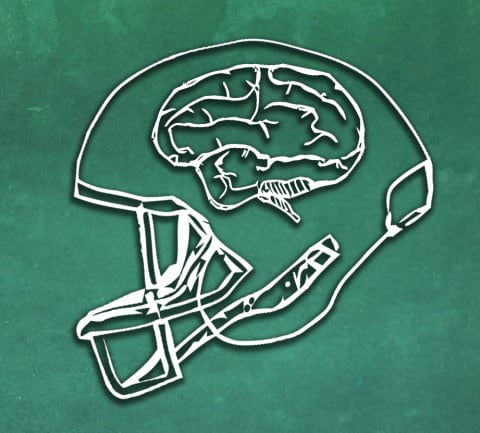When the movie Concussion hit theatres on Dec. 25, 2015, it raised an important question: is the risk of playing football worth the reward?
Will Smith stars in the lead role of Bennet Omalu, a Nigerian pathologist who finds himself in Pittsburgh performing autopsies on ex-NFL players. It is Omalu who first makes the grizzly discovery of what he calls Chronic Traumatic Encephalopathy — or more commonly known as CTE.
This long-term brain injury is a progressive degenerative disease and is caused by repetitive brain trauma, including sub-concussive hits that do not cause immediate symptoms. Omalu concludes this is what killed former NFL stars Mike Webster, Terry Long, Justin Strzelczyk, Andre Waters, Dave Duerson and Junior Seau.
this is what killed former NFL stars Mike Webster, Terry Long, Justin Strzelczyk, Andre Waters, Dave Duerson and Junior Seau.
Concussion portrays CTE as a complicated disease, but shows players slowly losing their grip on reality and going mad. They hear voices in their head, along with confusion, aggression and depression, and begin abusing drugs as a way to make the pain stop.
The problem with CTE is that it is undetectable until after death and there is no cure for the early symptoms. The effects of CTE are also expected to have taken the lives of former NHL enforcers Wade Belak, Derek Boogard, Rick Rypien, Steve Montador and Bob Probert. As the list of casualties continues to grow, we still know surprisingly little about the disease.
The producers are encouraging NFL players to see the movie, going as far as allowing free admission to anyone part of the National Football League’s Players Association. While Concussion certainly won’t deter any current athletes, parents will undoubtedly think about Omalu’s findings and quite possibly not allow their kids to play football.
Concussion states that it takes only 60 G’s of force on your body to cause a concussion, while the average NFL hit is 100 G’s of force. Multiply that force by the tens of thousands of hits that linemen, running backs and linebackers will face in their career and you’re looking at a severely damaged brain when all is said and done. New York Jets Pro Bowl cornerback Darrelle Revis told USA Today Sports that the film “hit home pretty hard.”
Don’t get me wrong; I’m a sports junkie who loves football. I watch and follow football on Sunday as religiously as people go to church, but even I was stunned by the statistics in the movie. One that stood out was this: 28 per cent of all NFL players will suffer from CTE at some point in their lives. Almost one third of all NFL players will endure a brain injury they can’t fix and many will lose their lives.
Following the discovery of CTE — a notion the NFL rejected for a number of years — steps have been put in place to try and make the game safer for its players. A new protocol forces players who are exhibiting any signs of a concussion to exit the game and immediately be tested. This protocol is now in the NHL and NFL, while both leagues have also introduced stiffer penalties and punishments for hits targeting the head of an opponent.
While Canadian Interuniversity Sport is obviously not the NFL, the potential for brain injuries remains the same. Student-athletes must consider the harm they are doing to their brains, as they work towards a degree. All of them are capable of getting an education and will likely not continue football after the university level, so it begs the question: is playing football worth the risk?
For many, including myself, the answer is absolutely. The memories and feelings associated with playing football and being part of a team is what drives people to play the game for so long. But as information increases and brain injuries become more common, don’t be surprised if the answer eventually becomes no.
—
Image: Jeremy Britz / Graphics Editor